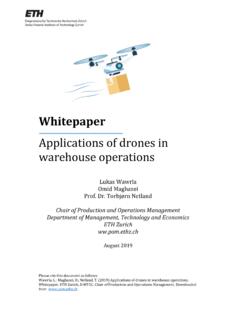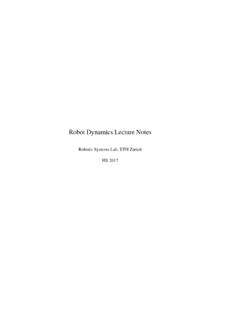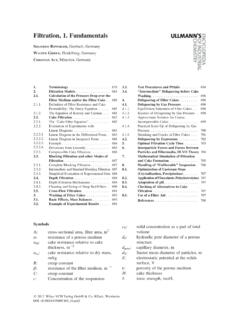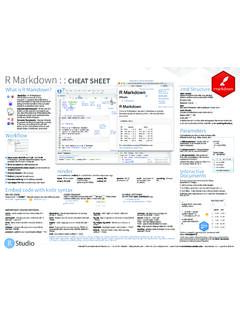Transcription of Analysis of ByteDance
1 Analysis of ByteDance with a close look on Douyin / TikTok Author: Xiaoye SHI Supervisor: Prof. Dr. Didier SORNETTE A thesis submitted to the Department of Management, Technology and Economics (D-MTEC) of the Swiss Federal Institute of Technology Zurich (ETHZ) in partial fulfilment of the requirements for the degree of Master of Science in Management, Technology and Economics June 2019 - 2 - Acknowledgements I would like to thank my supervisor Prof. Dr. Didier Sornette, who has kindly given me countless guidance and advice throughout the Master thesis. I appreciate the opportunity to work on this interesting topic under the Chair of Entrepreneurial Risks and is deeply grateful for all the help received along the process.
2 I also want to express my deepest gratitude to my parents, who have been supportive and encouraging under all circumstances. Without them, I would not be able to become the person I am today. - 3 - Abstract In 2018, ByteDance , a young Internet company with only 6 years of history, broke out on various news headlines as the highest valued unicorn. With the acquisitions of and Flipgram, the company s flagship product Douyin strikes to develop its global presence under the name TikTok. This thesis analyzed Douyin s historical growth and revenue model. As a main revenue driver, future user growth is predicted and calibrated by extending the methodology proposed in earlier studies by Cauwels and Sornette.
3 We considered three growth scenarios base, high and extreme, and estimated Douyin as well as ByteDance s value based on comparable company Analysis . ByteDance s key performance metrics and multiples were compared with four other firms in the similar industry, Facebook, Weibo, Momo and iQIYI. The study found out that in order to support the company s current valuation, Douyin needs to keep its user growth at a pace similar to the extreme growth scenario. However, it appears that with its current MAU reaching the maximum carrying capacity suggested in the high growth scenario, its future user growth rate is likely to slow down or even stop in the following years.
4 With other products of the company growing at their current pace, ByteDance s current valuation of 75 billion USD is considered to be too high. Keywords: mobile internet, short video industry, in-feed ads, logistic function, comparable company Analysis - 4 - Table of Contents Acronyms and Vocabulary - 5 - 1 Introduction - 6 - Context - 6 - Internet - 6 - ByteDance - 8 - Motivation - 12 - 2 Theoretical Background - 14 - Traditional Valuation methods - 14 - Income approach - 14 - Asset-based approach - 15 - Market approach - 16 - 3 Method - 18 - User Growth Analysis - 18 - Discrete Growth Rate - 18 - Logistic Function - 20 - Comparable Company Analysis (CCA) - 21 - 4 Data and Analysis - 25 - Revenue Breakdown - 26 - Revenue Analysis - 31 - Revenue Projection - 34 - Cost and Profit - 53 - Valuation Analysis and Discussion - 54 - 5 Conclusion - 59 - References - 62 - Appendix - 68 - Appendix A Global share of mobile Internet traffic - 69 - Appendix B Countries with the most Internet users - 69 - Appendix C Percentage of mobile apps that have been used only once - 70 - Appendix D Official pricing of ads on Douyin app - 70 - Appendix E Accumulated Downloads of Douyin & Kuaishou - 71 - Appendix G User development of Douyin - 71 - Appendix H Daily usage from overlapping users - 72 - - 5 - Acronyms and Vocabulary In alphabetical order.
5 ARPU average revenue per user, calculated as the revenue divided by the number of users (often yearly revenue divided by average MAU of the year) CCA comparable company Analysis CPC cost per click CPM cost per mille, also known as cost per thousand views CPT cost per time DAU daily active user the number of unique, engaged users per day DAU/MAU the proportion of monthly users who use the product on a daily basis reflects user stickiness DCF discounted cash flow EBITDA earnings before interest, tax, depreciation, and amortization EV enterprise value, as the total market value of the company net of cash FMV fair market value MAU monthly active user the number of unique, engaged users per month M&A mergers and acquisitions MC market capitalization per annum P/E price-to-earnings ratio, calculated as the market price (per share)
6 Divided by earnings (per share) from the most recent financial year P/S price-to-sales ratio, also known as sales multiple, calculated as the market price (per share) divided by sales (per share) from the most recent financial year UGC user generated content - 6 - 1 Introduction Context Internet Internet, the contraction of interconnected network, is a network of networks of all sorts of types and scopes connected by various technologies. It carries a wide range of resources and services. Originated in the twentieth century, Internet kept gaining popularity globally. As shown in Figure 1, the global number of Internet users has been growing since 2005. By the end of 2018, billion people had access to Internet, 52 inhabitants out of a hundred were using Internet services.
7 If we break down countries around the world into three categories based on the level of development they are currently at, we can see that the positive trend of user growth does not only occur in one category. Countries of all three categories have experienced upward growth curve the increasing demand and usage of internet is universal and phenomenal. The rapid adoption of Internet, the fast development and convergence of digital technologies further stimulated the innovation and widened its reach. Mobile phone became more prevalent. Instead of accessing Internet through fixed-line devices like computers, people could browse web anywhere, with some pocket-sized, multi-purpose devices that function fully as computers we call them smartphones.
8 The ubiquity of mobile internet and smartphones opened up a large new market. Internet now serves as a medium of a broad spectrum of areas including content services, communications, and commerce (Kim, Chan, & Gupta, 2007; McKnight & Bailey, 1995). In November 2018, 48% of the global web traffic come from mobile internet, with Asia in the leading position (StatCounter., ). We can see from Figure 2 that, by January 2019, Internet already has almost four and a half billion active users, out of which nearly 90% are also active mobile internet users, 74% of which are active on mobile - 7 - social media (We Are Social, & DataReportal, ). No doubt, the mobile social media sector is becoming one of the most promising and lucrative market.
9 Figure 1: Internet users per 100 inhabitants from 1997 to 2018 (primary axis)1; number of Internet users worldwide from 2005 to 2018, in millions (secondary axis)2 Note: rounded values; * represents estimates 1 The number of Internet users is grouped into three categories: world, developed countries, developing countries, and LDCs (least developed countries, data is available only from 2005). Classifications of countries into developed/developing/LDCs are based on the UN M49 ( ). Lines were plotted in two different styles, with 1997-2005 being dotted and 2005-2018 being solid, as the two sets of time-series data were retrieved from different sources.
10 Source: ITU World Telecommunication (solid line) / ICT Indicators database (dotted line) 2 Source: ITU World Telecommunication / ICT Indicators database ,0001,5002,0002,5003,0003,5004,0004,5000 102030405060708090 Number of Internet Users Worldwide [mn]Internet Users per 100 InhabitantsYearDevelopedDevelopingWorldL DCs - 8 - Figure 2: Global digital population as of January 2019, in millions (primary axis) and in percentage (secondary axis)3 With nearly 772 million internet users by end of 2017, 21% of the world total number, China is undoubtfully the biggest market for Internet services. Leveraging the tremendous market size, more and more Internet companies were set up. ByteDance was one of them.














